Coxarthrosis (hip arthrosis) is one of the most common diseases of the musculoskeletal system.
The hip joint is the largest joint in the body, which connects the femoral bones to the pelvis, thereby taking on a large load. The joint has the form of a spherical hinge, while the round head of the femur is "embedded" in the hemispherical acetabulum of the pelvis. It should be noted that the surface of the bones is covered with durable and at the same time elastic cartilage, which acts as a shock absorber and ensures unhindered sliding of the bones over each other, as well as protecting the bones from destruction.
Causes of coxarthrosis
Osteoarthritis of the hip joint can develop under the influence of various factors that lead to damage to cartilage tissue and, as a result, bone destruction.
The most common causes of the disease include:
injuries;
irrational excessive physical activity;
genetic predisposition;
various diseases.
Stages and symptoms of coxarthrosis
There are three degrees of hip arthrosis.
With grade 1 coxarthrosis, transient painful sensations appear in the groin area, in particular, after physical exertion, prolonged standing, as well as excessive movements in the joint. As a rule, the pain subsides after rest. It is possible to identify coxarthrosis at the first stage of development only with the help of X-ray examination, which allows you to see minor marginal bone growths.
hip joint coxarthrosis of the 2nd degree is characterized by the appearance of pain, which is more intense and can occur even with a slight load. There is also lameness and pain radiating into the inner thigh from the groin area. Movement restriction often develops, and muscle strength decreases.
With grade 3 hip coxarthrosis, more pronounced symptoms are observed. The pain is constant and can occur even with minor exertion, for example, when walking on the stairs. Due to the constant pain during exertion and the restriction of all movements in the joint, patients are forced to use a cane. In some cases, a relative shortening of the leg develops as a result of the misalignment of the pelvis and spine, and there is also a significant restriction of motor activity.
Treatment of coxarthrosis
Conservative treatment of hip coxarthrosis
Conservative therapy is aimed at increasing mobility, reducing pain and maintaining muscle function. When choosing a treatment method, the age of the patient, the general state of health, the stage and features of the clinical manifestations of the disease are taken into account.
In coxarthrosis of stages 1 and 2, treatment is usually carried out in an outpatient setting. The main components of conservative treatment are physiotherapy, drug therapy, massage and physical therapy. The most effective combination of these methods is under the supervision of a rheumatologist.
Drugs from the group of nonsteroidal anti-inflammatory drugs have anti-inflammatory and analgesic effects, vasodilators improve blood circulation in damaged joints, and chondroprotectors help maintain the normal composition of cartilage. The use of ointments and compresses during treatment improves blood circulation and relieves muscle spasms. Drug therapy should be combined with physiotherapy methods: electrotherapy, magnetic therapy, ultrasound therapy and others. An important part of the treatment of coxarthrosis is the passage of massage courses, as well as physical therapy classes. During the period of exacerbation, it is necessary to reduce vertical loads (exclude jumping, prolonged standing, lifting weights). Loads that are not related to the vertical position of the body are advisable, for example, exercise bike or swimming.
Intra-articular administration of any drugs is highly undesirable because it has more risks and side effects than benefits.
Surgical treatment of coxarthrosis
Surgical treatment is prescribed if conservative measures are not effective enough or the disease progresses rapidly. Surgical intervention is also possible for grade 3 coxarthrosis of the hip joint, with a complete replacement of the worn-out joint with an artificial one (hip replacement). Other methods (osteotomies, arthrodesis) are outdated and are used extremely rarely, most often if for some reason it is impossible to perform an endoprosthesis.
Arthroplasty is an operation that is performed in advanced stages of osteoarthritis, in case of destruction of one or both articular surfaces. During surgery, articulating articular surfaces are replaced with artificial (metal) ones, between which a special insert is placed, designed to perform the functions of cartilage. The liner is made of various materials – ceramics, polyethylene or metal. In most cases, endoprosthetics can completely restore the lost functions of the joint.
Today, complete joint replacement or total arthroplasty (arthroplasty) is the most effective method of treating osteoarthritis. Modern endoprostheses are made of special materials that are absolutely compatible with body tissues and have a very long service life. Currently, surgeons have access to special endoprostheses with large anatomical heads and short legs, the use of which allows to minimize damage to soft tissues, as well as to leave a reserve of intact bone tissue in case of possible future operations.
The operation is performed using minimally invasive surgical access techniques, when tissues and muscles are not cut, but "spread apart". The skin incision does not exceed 6-8 cm. This technology significantly reduces the recovery time, allowing the patient to walk the very next day with full support on the operated leg.
Rehabilitation after surgical treatment of coxarthrosis
During the standard course of the postoperative period, recovery of motor functions under the guidance of rehabilitation doctors takes place within a week - the patient can get up, stand, walk, climb and descend stairs after surgery. Additional support (crutches, walkers) is not required by everyone, and in most cases as psychological support. The time of full recovery after endoprosthesis depends on many factors – the initial condition of the patient, the volume and complexity of the intervention, age, weight and other indicators, and ranges from 3 weeks to 3 months.














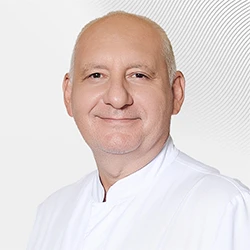
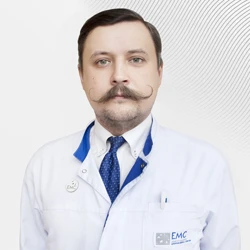

.webp)

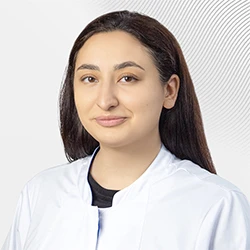
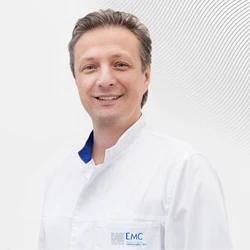
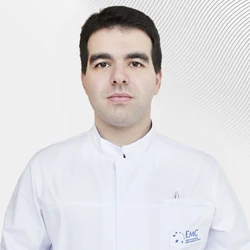
.webp)


